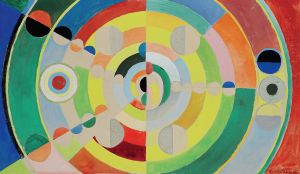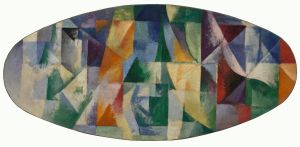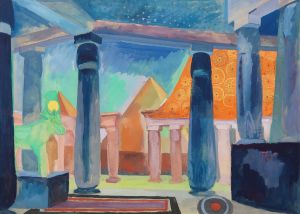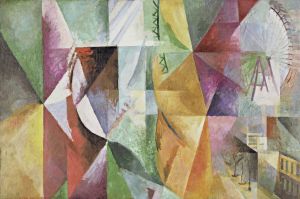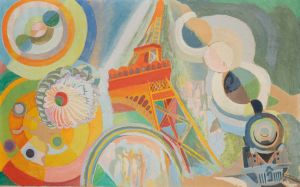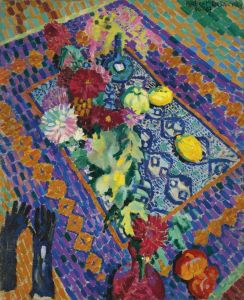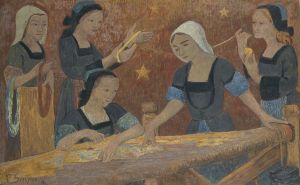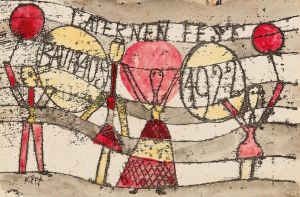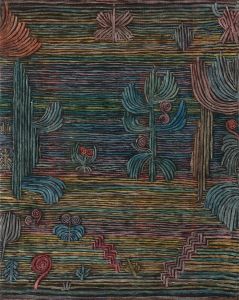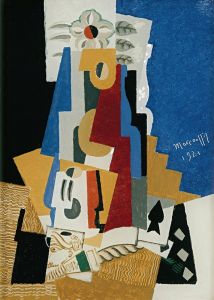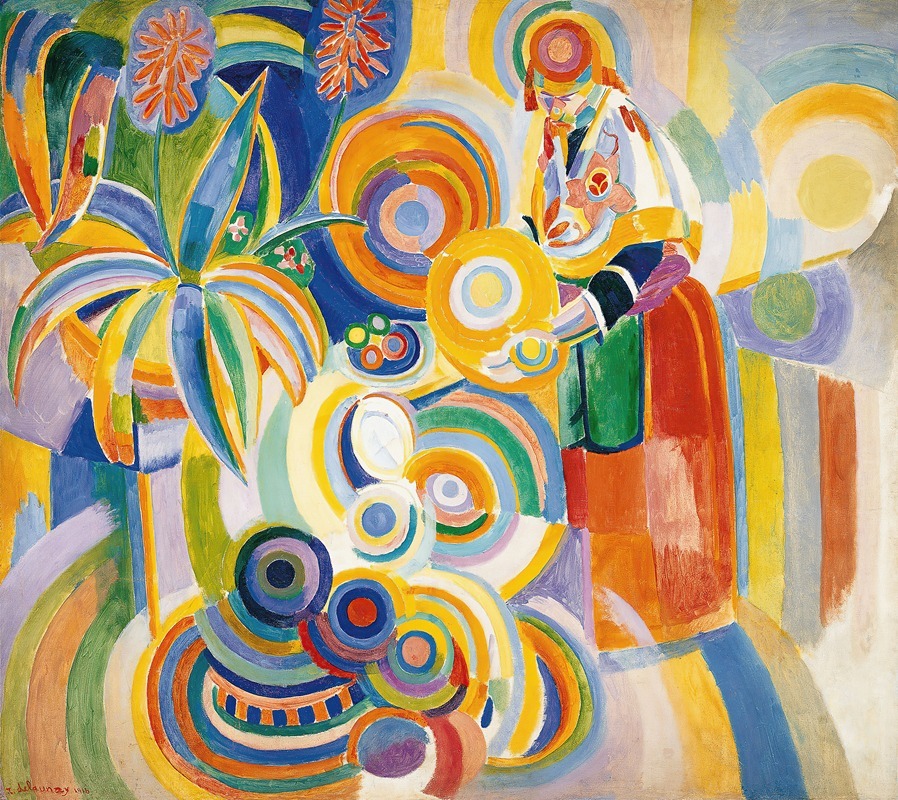
Portuguese Woman
A hand-painted replica of Robert Delaunay’s masterpiece Portuguese Woman, meticulously crafted by professional artists to capture the true essence of the original. Each piece is created with museum-quality canvas and rare mineral pigments, carefully painted by experienced artists with delicate brushstrokes and rich, layered colors to perfectly recreate the texture of the original artwork. Unlike machine-printed reproductions, this hand-painted version brings the painting to life, infused with the artist’s emotions and skill in every stroke. Whether for personal collection or home decoration, it instantly elevates the artistic atmosphere of any space.
"Portuguese Woman" is a painting by the French artist Robert Delaunay, created in 1916. Delaunay was a prominent figure in the early 20th-century art movement known as Orphism, which is characterized by its use of vibrant color and abstract forms. This movement is often seen as a branch of Cubism, but it distinguishes itself through its emphasis on color and the lyrical quality of its compositions.
The painting "Portuguese Woman" exemplifies Delaunay's mature style, where he combines elements of Cubism with his unique approach to color and form. The work is notable for its fragmented depiction of the subject, a woman, which is a hallmark of Cubist influence. However, unlike the more monochromatic palette often associated with Cubism, Delaunay's use of color is bold and dynamic, reflecting his interest in the interplay of light and color.
In "Portuguese Woman," Delaunay employs a technique that breaks down the figure into geometric shapes and planes, creating a sense of movement and rhythm. The composition is complex, with overlapping forms and a vibrant color palette that includes reds, blues, yellows, and greens. This approach not only captures the essence of the subject but also conveys a sense of energy and dynamism.
Delaunay's work during this period was heavily influenced by his interest in color theory and the scientific study of light. He was particularly inspired by the writings of Michel-Eugène Chevreul, a French chemist whose work on color contrast and harmony had a significant impact on artists of the time. Delaunay's exploration of these ideas is evident in "Portuguese Woman," where he uses contrasting colors to create depth and vibrancy.
The painting is also reflective of Delaunay's broader artistic goals, which sought to transcend traditional representation and explore the emotional and sensory effects of color and form. His work during this period is often seen as a precursor to later abstract movements, as he pushed the boundaries of how color and form could be used to convey meaning and emotion.
"Portuguese Woman" is housed in the Musée National d'Art Moderne, which is part of the Centre Pompidou in Paris. The painting is an important example of Delaunay's contribution to modern art and his role in the development of abstract art in the early 20th century. It continues to be studied and admired for its innovative use of color and form, as well as its place within the broader context of Delaunay's artistic career and the Orphism movement.
Overall, "Portuguese Woman" stands as a testament to Robert Delaunay's artistic vision and his ability to blend the scientific with the aesthetic, creating works that are both intellectually engaging and visually captivating.





